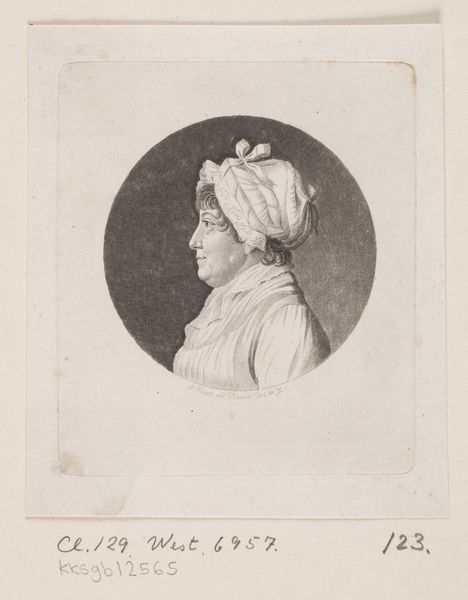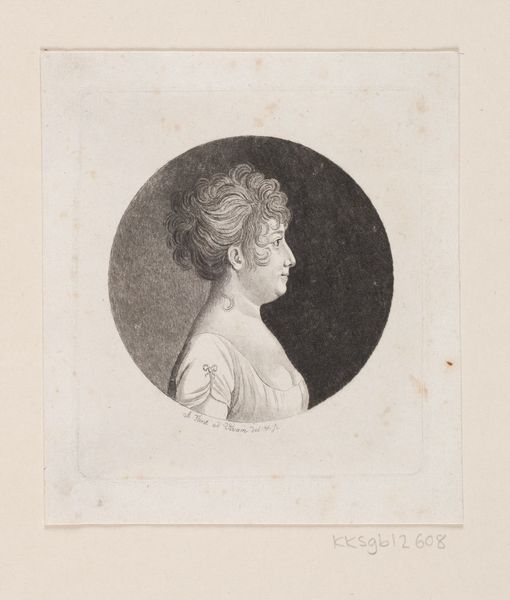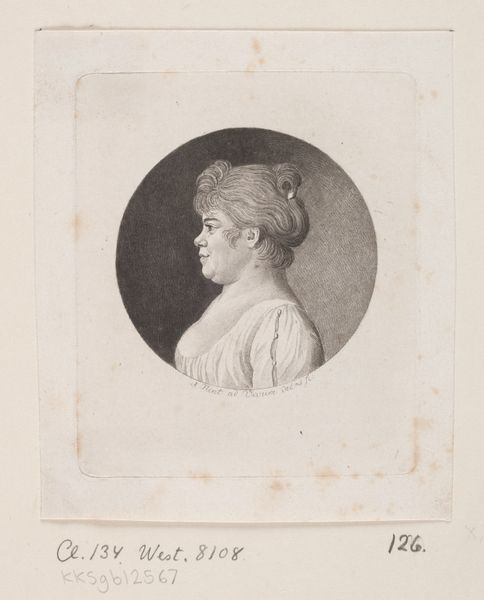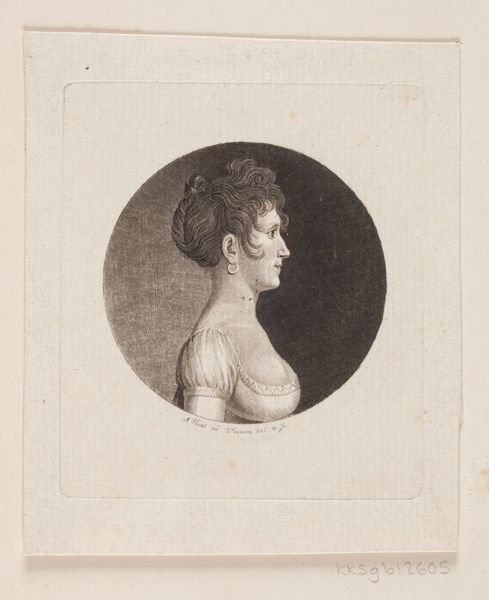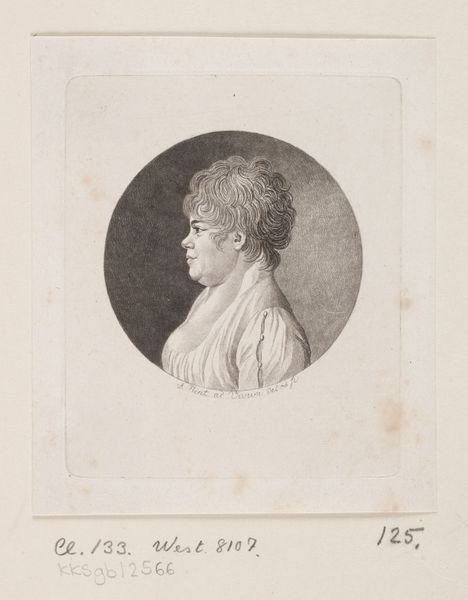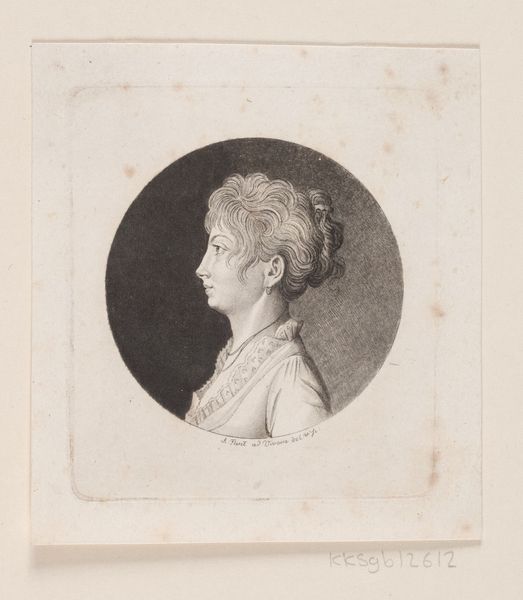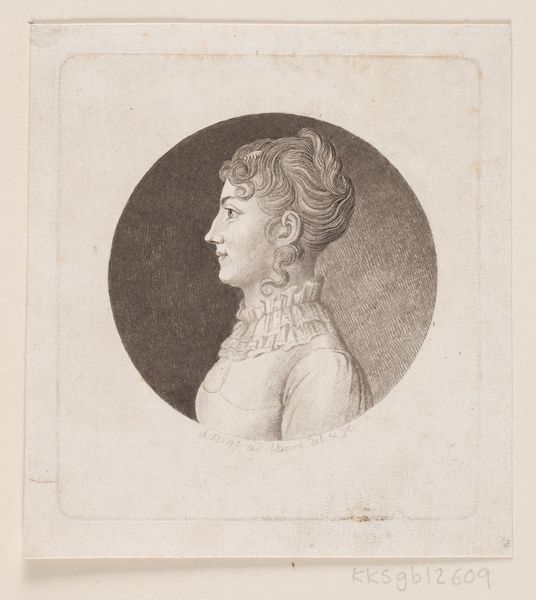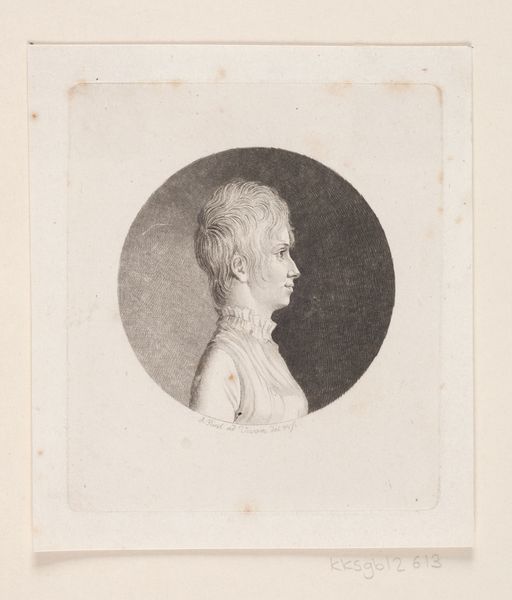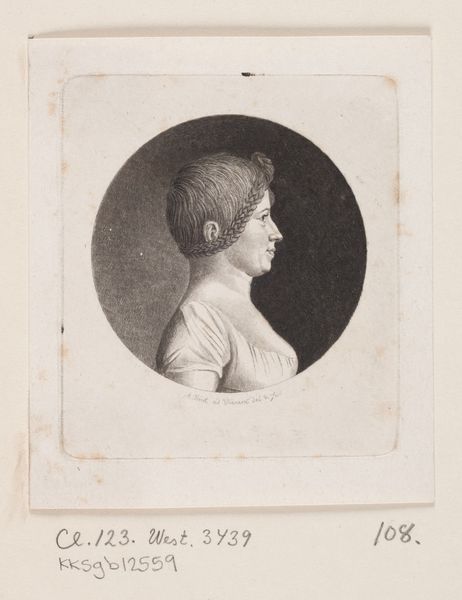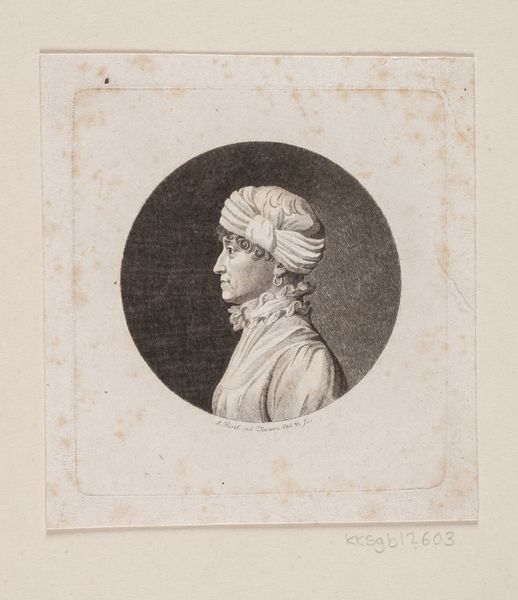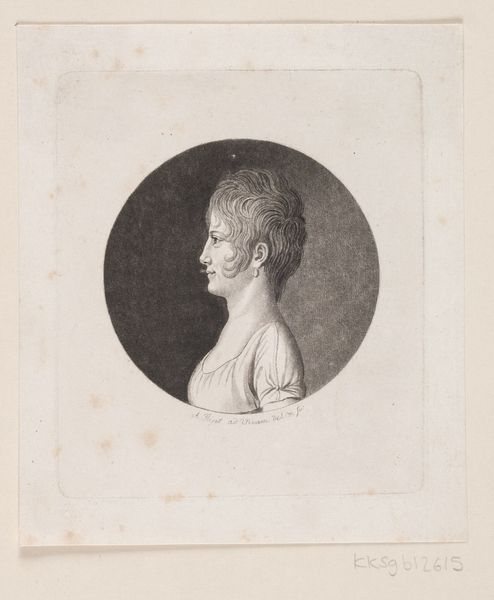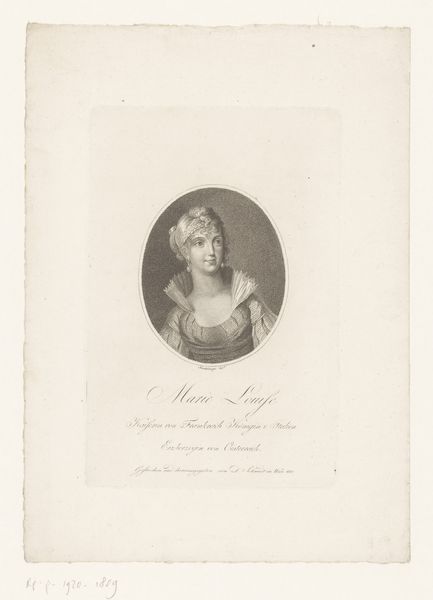
print, engraving
#
portrait
#
pencil drawn
#
neoclacissism
# print
#
pencil sketch
#
charcoal drawing
#
figuration
#
pencil drawing
#
line
#
pencil work
#
history-painting
#
engraving
Dimensions: 61 mm (None) (billedmaal), 85 mm (height) x 75 mm (width) (plademaal)
Editor: This print, “Ubekendt kvindeportræt”, or “Unknown Woman Portrait”, by Andreas Flint, from around 1767 to 1824, has such an austere feeling to it, yet the ornamentation in her hair hints at status. What stories do you think it could tell about the representation of women? Curator: It's interesting you pick up on that austerity. Neoclassical portraiture often aimed to convey ideals of virtue and reason, but what happens when we apply a feminist lens? Who were the women deemed worthy of representation in this period, and what roles were they expected to fulfill? Do you notice anything about her gaze, or lack thereof? Editor: She isn't looking at us; it’s a profile view, quite formal. Maybe that suggests the artist was less concerned with her individual personality and more interested in portraying her as a symbol? Curator: Precisely. Think about the social and political context of the time. Was this woman from the aristocracy, and how did social expectations impact her life? The "unknown" title itself, forces us to consider the politics of visibility and power, who gets remembered and why? This anonymity becomes a space for questioning. Editor: So, this isn’t just a pretty portrait. It's like a document reflecting power structures and how women were perceived or expected to behave in a certain era. The work asks us to go beyond surface aesthetics, correct? Curator: Absolutely! By examining art through an intersectional lens, we see how identity, gender, class and societal power dynamics have shaped not only the creation of art but its reception and interpretation. Editor: Thanks! I'm starting to think very differently about portraiture and representation! Curator: Likewise. It reminds us to be critical and ask questions about what’s included, what's excluded, and why.
Comments
No comments
Be the first to comment and join the conversation on the ultimate creative platform.
